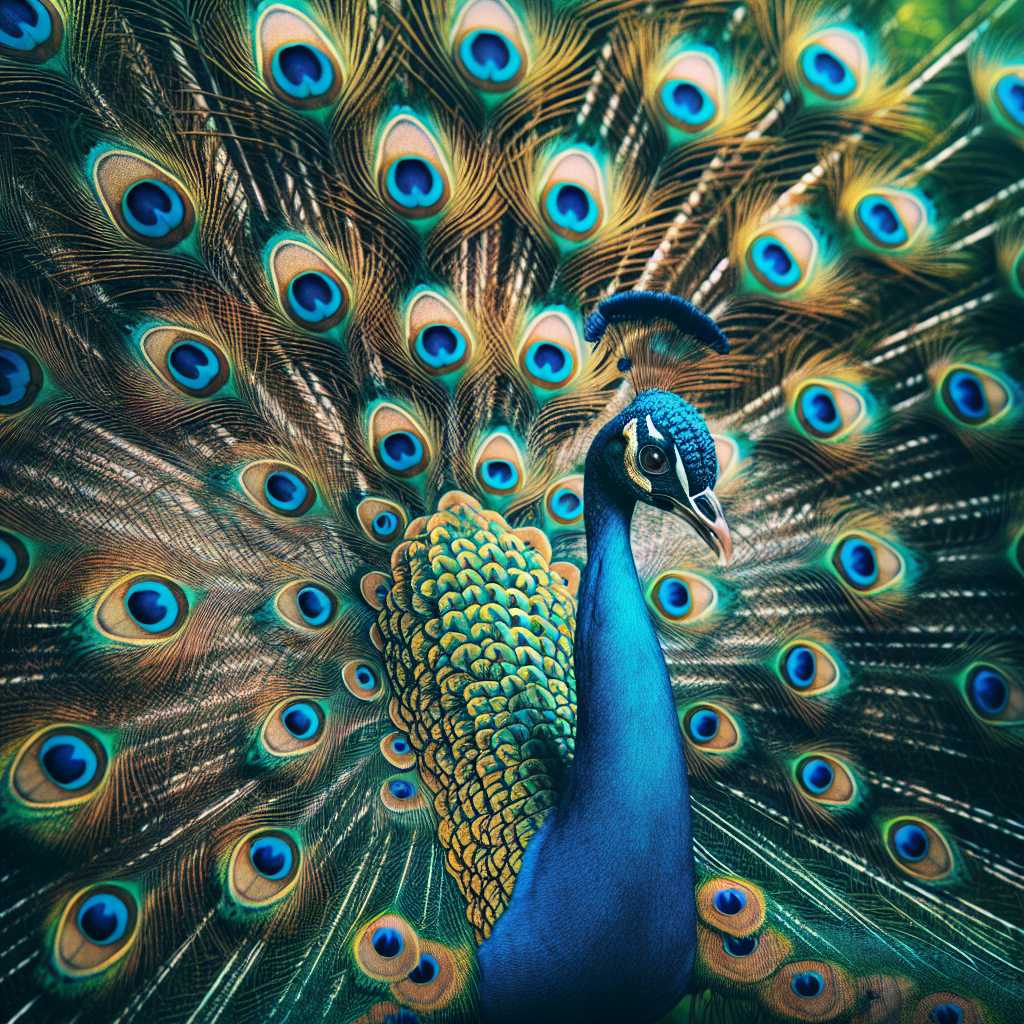The Diverse World of the Peacock: An Exploration of Its Rich History, Significance, and Biology
The peacock is a bird that has captured human fascination for millennia, prized for its mesmerizing plumage and significant symbolic presence across various cultures. Known scientifically as members of the genus Pavo, with the two most recognized species being the Indian Peafowl (Pavo cristatus) and the Green Peafowl (Pavo muticus), these birds are native to South Asia and have been spread throughout the world due to human admiration.
A Dance of Feathers: The Biology and Behavior of Peafowl
Peafowls are known for their extravagant displays – notably, the males’ striking tail feathers, often incorrectly referred to as ‘peacocks’, which in fact refers to only the male of the species. These tail feathers, or “trains,” are not true tail feathers but elongated upper tail coverts. They are covered in iridescent spots known as ‘eyes’, which are mesmerizing in courtship rituals. Male peafowls fan these trains out to attract females, shimmering them in a showcase of beauty and fitness.
These birds are also identified by their calls which resonate through the forests during mating seasons. Aside from their striking visual allure, they possess a strident call. Despite their regal appearance, peafowls are ground-dwelling birds, good runners but not particularly adept flyers, only taking to the air to roost or escape threats.
Their diet is equally diversified, including insects, plants, and small creatures demonstrating their omnivorous nature which aids their adaptation to a variety of environments beyond their forest habitats. These include inhabited areas where they live in proximity to humans who may regard them either with fondness or as agricultural pests.
Symbolism and Significance: Peacocks in Culture and History
Rooted deeply in mythology and culture, peacocks symbolize different concepts around the world. In Hinduism, the peacock is associated with the deity Saraswati as well as the warrior god Kartikeya, embodying values such as benevolence and vigilance. They also stand for beauty, prosperity, and royalty – layers of meaning which have led to their presence in Indian literature and art for centuries.
Moving westward, the peafowl has its place in Greek and Roman mythology – associated with Hera and Juno respectively – seen as guardians representing immortality and resurrection due to antiquated beliefs that its flesh did not decay after death.
Such reverence traversed time leading to its physical journey across lands. From being objects of the royal menageries to influencing fashion through their enigmatic color patterns – poised between ornamental value and cultural iconography – peacocks have become symbols in heraldry and emblems recognized universally.
Conservation Status: Challenges Facing Today’s Peafowl
Despite once ranging freely across open forests and grasslands in India and Sri Lanka as well as Southeast Asia for Green Peafowls, habitat loss and hunting pressures have raised concerns regarding their conservation status. The Indian Peafowl enjoying the status of national bird of India is under protection with a stable population but the same security does not blanket other species globally.
For instance, the Green Peafowl which was also admired across its territory is no longer abundant outside protected areas. Conservation efforts including legal protection and habitat maintenance are ongoing; however, delineating conservation strategies remains challenging due to human-animal conflict especially in agricultural landscapes.
